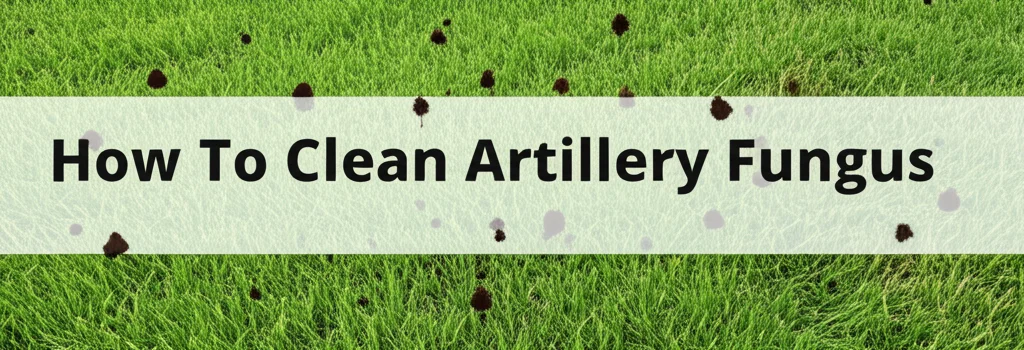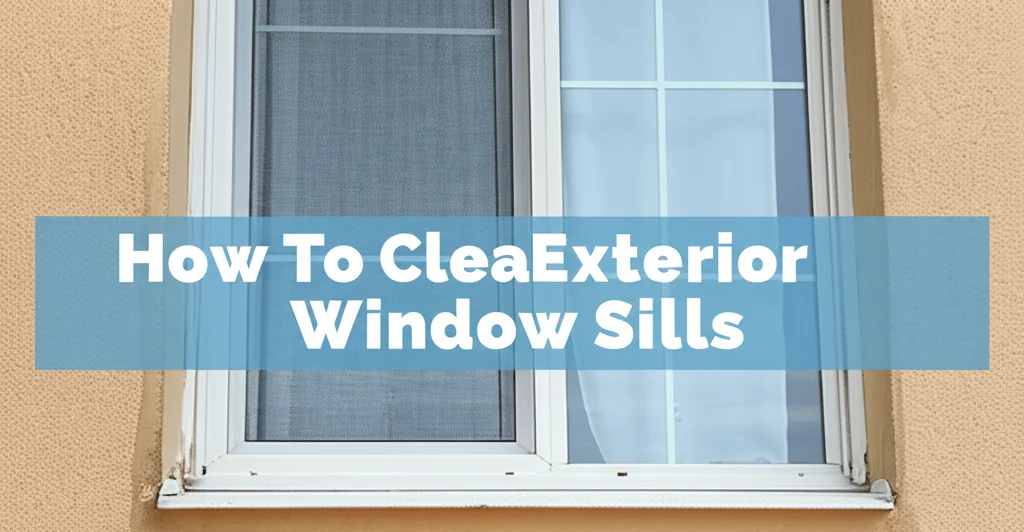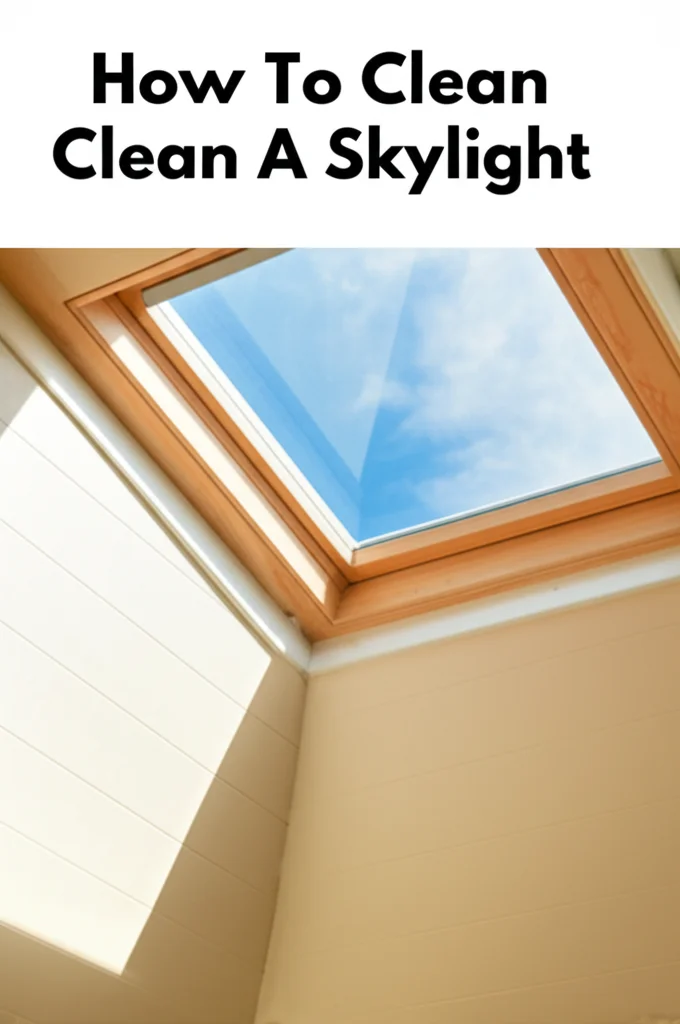· Home Maintenance · 7 min read
How To Clean Artillery Fungus

Dealing with the Mess: How to Clean Artillery Fungus
Have you noticed tiny black specks splattered across your siding, windows, or even your car? These aren’t bird droppings – you’re likely dealing with artillery fungus. This peculiar fungus grows on decaying wood mulch and launches its spores with surprising force, creating a messy and unsightly problem for homeowners. Cleaning artillery fungus isn’t always easy, but it’s crucial to protect your property from further damage and maintain its curb appeal. This article will guide you through the process of identifying, cleaning, and preventing artillery fungus, ensuring your home stays looking its best. We’ll cover everything from the best cleaning solutions to preventative measures you can take to avoid future outbreaks.
Quick Answer: To clean artillery fungus, gently scrub the affected surfaces with a solution of mild detergent and water, or a specialized fungicide. Rinse thoroughly and repeat if necessary. Preventing future growth involves replacing wood mulch with alternative materials like gravel or rubber.
Takeaway:
- Identify artillery fungus early.
- Use gentle cleaning methods to avoid damage.
- Switch to alternative mulch to prevent regrowth.
Understanding Artillery Fungus: What You Need to Know
Artillery fungus, scientifically known as Sclerotinia brevspora, is a common wood-decaying fungus. It thrives in moist environments, particularly in wood mulch that hasn’t fully decomposed. The fungus creates tiny, black, projectile spores that are launched upwards, often sticking to surfaces like siding, windows, cars, and even light-colored furniture. These spores aren’t harmful to humans or pets, but they are a nuisance and can be difficult to remove. Understanding how this fungus operates is the first step in effectively tackling the problem.
The “artillery” name comes from the way the fungus shoots its spores – mimicking a tiny cannon. These spores are sticky, making them adhere strongly to surfaces. They often appear as small, dark spots that can accumulate over time, creating a widespread and noticeable problem. Ignoring artillery fungus can lead to a buildup of spores, making the cleaning process even more challenging.
Identifying Artillery Fungus: Is That Really What You’re Seeing?
Before you start cleaning, it’s important to confirm you’re actually dealing with artillery fungus. Mistaking it for something else could lead to using the wrong cleaning methods. Look for these key characteristics: small, black, slightly raised spots that are firmly attached to surfaces. These spots are typically less than 2mm in diameter.
Here’s a quick checklist to help you identify artillery fungus:
- Location: Are the spots concentrated on surfaces near wood mulch beds?
- Appearance: Are the spots small, black, and slightly raised?
- Texture: Are the spots difficult to scrape off?
- Mulch Condition: Is the wood mulch old and decaying?
If you answer yes to most of these questions, you’re likely dealing with artillery fungus. If you’re still unsure, you can consult with a local landscaping professional or pest control expert for a definitive diagnosis. Proper identification is crucial for choosing the most effective cleaning solution.
The Best Cleaning Solutions for Artillery Fungus
Now that you’ve identified the fungus, let’s talk about cleaning. The goal is to remove the spores without damaging the underlying surface. Here are several effective cleaning solutions:
- Mild Detergent and Water: This is a good starting point for most surfaces. Mix a small amount of dish soap with warm water and gently scrub the affected areas with a soft brush or sponge.
- Vinegar Solution: White vinegar is a natural cleaning agent that can help dissolve the spores. Mix equal parts vinegar and water and apply to the affected areas. Let it sit for a few minutes before scrubbing and rinsing. You can find more information on using vinegar for cleaning at https://www.beacleaner.com/how-to-clean-hardwood-floors-with-vinegar/.
- Commercial Fungicides: For stubborn cases, you may need to use a commercial fungicide specifically designed for outdoor use. Always follow the manufacturer’s instructions carefully.
- Pressure Washing (with caution): A pressure washer can be effective, but use a low-pressure setting to avoid damaging siding or windows.
Important Note: Always test any cleaning solution in an inconspicuous area first to ensure it doesn’t cause discoloration or damage.
Cleaning Different Surfaces Affected by Artillery Fungus
The cleaning process will vary depending on the surface you’re dealing with. Here’s a breakdown for common areas:
- Siding: Use a mild detergent and water solution or a fungicide. Scrub gently with a soft brush and rinse thoroughly.
- Windows: Vinegar solution works well on windows. Spray, let sit for a few minutes, and wipe clean with a microfiber cloth.
- Cars: Wash your car with a car wash soap and water. For stubborn spots, you can use a bug and tar remover.
- Painted Surfaces: Be extra careful with painted surfaces. Use a mild detergent and water solution and avoid harsh scrubbing. If the paint is damaged, you may need to repaint.
- Wood Decks/Fences: A mixture of water and oxygen bleach can be effective. Apply, let sit, and rinse thoroughly.
Remember to always work from the bottom up to prevent streaks and ensure even cleaning. If you’re unsure about cleaning a particular surface, consult a professional cleaning service. You might also find helpful tips on cleaning exterior surfaces at https://www.beacleaner.com/how-to-clean-outside-windows-upstairs/.
Preventing Artillery Fungus: Long-Term Solutions
Cleaning artillery fungus is a temporary fix if you don’t address the root cause: the decaying wood mulch. Here’s how to prevent future outbreaks:
- Replace Wood Mulch: This is the most effective solution. Switch to alternative mulches like gravel, rubber mulch, or pine straw.
- Maintain Mulch Depth: If you choose to continue using wood mulch, keep the depth to 2-3 inches. This allows for better airflow and reduces moisture buildup.
- Improve Drainage: Ensure proper drainage in your mulch beds to prevent water from pooling.
- Remove Decaying Wood: Regularly remove any decaying wood or plant debris from your garden.
- Consider Fungicides (Preventative): Some preventative fungicides can be applied to wood mulch to inhibit fungal growth.
Switching to a different type of mulch is the most impactful step you can take. Rubber mulch, for example, doesn’t decompose and doesn’t provide a suitable environment for artillery fungus to thrive. You can learn more about alternative flooring options at https://www.beacleaner.com/how-to-clean-vinyl-plank-flooring/.
When to Call a Professional
While many cases of artillery fungus can be handled with DIY methods, there are times when it’s best to call a professional. Consider hiring a professional cleaning service if:
- The infestation is widespread: If the fungus has spread over a large area, it may be too time-consuming and difficult to clean yourself.
- You’re dealing with a delicate surface: If the fungus is on a fragile surface like antique windows or delicate siding, you don’t want to risk causing damage.
- You’re uncomfortable working at heights: If the fungus is on high areas of your home, it’s best to leave the cleaning to professionals.
- You’ve tried cleaning and it’s not working: If you’ve attempted to clean the fungus yourself and haven’t had success, a professional may have access to more effective cleaning solutions and equipment.
Frequently Asked Questions About Artillery Fungus
Q: Is artillery fungus harmful to my home? A: While not directly harmful to the structure of your home, artillery fungus can be unsightly and may cause aesthetic damage if left untreated. The spores can stain surfaces and require regular cleaning.
Q: Can artillery fungus grow on other materials besides wood mulch? A: Primarily, artillery fungus thrives on decaying wood mulch. However, it can occasionally grow on other decaying organic matter, such as wood piles or fallen branches.
Q: How long does it take for artillery fungus to reappear after cleaning? A: If you don’t address the source (the wood mulch), artillery fungus can reappear within a few weeks or months, especially after rain.
Q: Are there any natural remedies for preventing artillery fungus? A: While replacing wood mulch is the most effective solution, improving drainage and ensuring good airflow in your mulch beds can help reduce moisture buildup and discourage fungal growth.
Q: Will bleach kill artillery fungus? A: While bleach can kill the fungus, it’s not recommended for use on most exterior surfaces as it can cause discoloration and damage. Safer alternatives like vinegar or commercial fungicides are preferred.
Say Goodbye to Black Spots: Keeping Your Home Artillery Fungus-Free
Cleaning artillery fungus requires a bit of effort, but it’s a manageable task with the right knowledge and tools. Remember that prevention is key – switching to alternative mulch is the most effective way to avoid future outbreaks. By following the steps outlined in this guide, you can keep your home looking its best and protect it from the unsightly effects of artillery fungus. Don’t let these tiny projectiles take over your property; take action today and enjoy a clean, beautiful home! If you’re still struggling with stubborn stains, consider exploring other cleaning solutions at https://www.beacleaner.com/how-to-remove-baking-soda-residue-from-carpet/.




